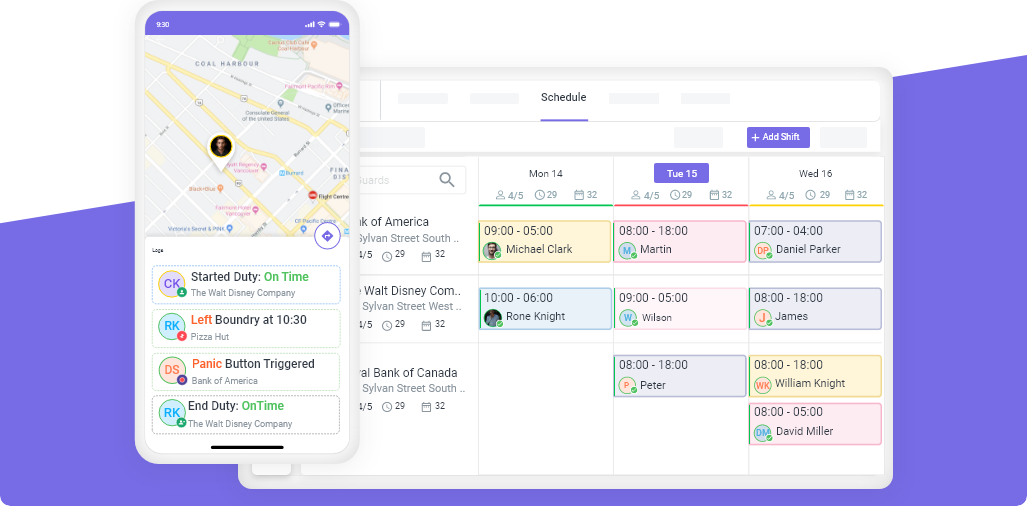How Much Should a Cleaning Employee Get Paid?
Wed, Jul 3, 2024
Read in 7 minutes
Looking for a way to know how much to pay your cleaning employees? Find out the perfect balance between paying your cleaners just right to keep them engaged in the company and making profits.

Figuring out how much to pay your cleaning employees is crucial for maintaining a motivated workforce and ensuring your business remains competitive. Proper compensation not only attracts top talent but also helps retain skilled workers. If you do not want to spend majority of your time looking for new skilled employees, then you need to find a perfect balance. This balance will keep your cleaners happy and your pockets full of money. To make a successful and growing cleaning business, having a skilled staff is very important. They are the face of your company and the ones clients talk to the most.
If you are not paying your cleaners less, they will make mistakes and avoid work. And that is something which is not right for your company’s image. In this blog, we’ll explore various aspects of cleaning employee compensation, including different payment methods, factors to consider, and tips for ensuring fair pay.
How Should I Pay My Cleaning Employees?
There are different ways to compensate cleaning employees. Choosing the right method depends on your business model and the specific needs of your employees.
-
Hourly Pay
Paying employees by the hour is one of the most common methods in the cleaning industry. It offers flexibility for both employers and employees. Hourly pay ensures employees are compensated for the actual time they work, which can be beneficial for jobs that vary in length.
- Pros: Flexibility, easy to calculate, ensures fair compensation for hours worked.
- Cons: Requires accurate tracking of hours. Which may lead to inconsistent income for employees.
Hourly pay is particularly useful for part-time workers or for businesses with changing demands. It allows you to adjust the workforce size based on the volume of work available, thus managing labor costs more effectively. If you are still finding it difficult to know how much should a cleaning employee get paid hourly, there is a simple formula.
Your main focus should be on calculating the hourly pay. Here’s the formula:
(number of workers) X (hours on the job)
____________________________________________
(price of the job)
Let’s say two cleaners spend three hours on the job and you’re charging $200 for the clean.
(2) X (3)
_________
($200)
Your hourly rate is $33.
This way you can easily pay your cleaners without harming your pockets too.
-
Full-Time Positions
Offering full-time positions with a fixed salary can provide stability for your employees. This method is often preferred for larger cleaning companies that require consistent staffing levels.
- Pros: Stability for employees, easier scheduling, potential for benefits like health insurance and paid time off.
- Cons: Higher fixed costs for employers, less flexibility in adjusting workforce size based on demand.
Full-time positions often come with benefits that can be attractive to employees. Health insurance, paid leave, and retirement plans can make your company more appealing, helping to attract and retain dedicated workers.

-
Part-Time Work
Part-time positions are ideal for businesses that need flexibility or for employees who prefer working fewer hours. This can be a good option for seasonal work or businesses with fluctuating demands.
- Pros: Flexibility, lower costs for employers, suitable for employees seeking work-life balance.
- Cons: Lack of benefits, potential for inconsistent income for employees, may require more effort in scheduling.
There is an easy way you can calculate the pay of part-time cleaners. Some companies pay their cleaners a set percentage of each job’s earnings. Others use different percentages depending on the job type.
For example, you might pay your employees 40% of each job’s earnings. So, if a job earns $100, the employee gets $40, and the company keeps $60.
This method keeps the company’s share of the revenue consistent.
Part-time work can attract students, retirees, or individuals looking for supplementary income. While it offers flexibility, it’s important to manage schedules carefully to ensure coverage during peak times. And for that, you can use scheduling software that will help you keep track of your cleaners.
Factors to Consider When Calculating How Much To Pay Cleaning Employees
When determining pay rates for cleaning employees, several factors should be taken into account to ensure fair and competitive compensation.
Experience and Skill Level
More experienced and skilled cleaning employees should be compensated accordingly. Employees who have been in the industry for a long time or who possess specialized skills can add significant value to your business.
- Higher pay for experienced workers: This helps attract and retain top talent and ensures high-quality service for clients.
Consider creating a tiered pay structure based on experience and skill level. This not only rewards employees for their expertise but also motivates less experienced workers to improve their skills.
Regional Pay Differences
Pay rates can vary significantly based on geographic location. It’s important to research the average pay rates in your area to ensure your compensation is competitive.
- Regional cost of living: Higher pay in urban areas with a higher cost of living, lower pay in rural areas where the cost of living is lower.
Tools like the Bureau of Labor Statistics (BLS) provide valuable data on regional pay scales. Use this information to benchmark your pay rates against industry standards in your area.
Industry Standards
Stay informed about industry standards and regulations. This includes minimum wage laws, overtime pay requirements, and any industry-specific guidelines.
**\
- Compliance with laws:** Ensures you avoid legal issues and penalties, and maintains a fair work environment.
For example, the Fair Labor Standards Act (FLSA) in the U.S. sets federal minimum wage and overtime pay standards. Be sure to comply with these regulations to protect your business from legal repercussions.
Job Complexity and Responsibilities
Different cleaning jobs come with varying levels of complexity and responsibility. Jobs that require more skills, handling hazardous materials, or managing large teams should be compensated higher.
- Complexity and risk: Fairly compensating for more demanding jobs helps ensure quality and safety.
Create detailed job descriptions outlining the responsibilities and required skills for each position. This clarity helps justify pay differences and ensures employees understand their roles.
Ensuring Fair Compensation
Ensuring your cleaning employees are paid fairly and competitively is essential for the success of your business. Whether you choose hourly pay, full-time positions, or part-time work, it’s important to consider factors like experience, regional pay differences, industry standards, and job complexity. By doing so, you can attract and retain skilled workers, maintain a motivated workforce, and provide high-quality services to your clients.
Tips for Negotiating Pay with Cleaning Employees
Negotiating pay with cleaning employees can be challenging but is essential for establishing a positive and fair work environment. Here are some tips to help you navigate this process effectively.
- Preparing for the Negotiation
Before entering negotiations, gather all relevant data about industry standards, regional pay rates, and your company’s budget. Being well-prepared demonstrates professionalism and helps you make informed decisions.
- Know the market: Understanding what competitors are paying helps you offer competitive salaries.
- Assess your budget: Ensure you know how much you can afford to pay while maintaining profitability.
- Offering Competitive Benefits
In addition to salary, benefits can make a significant difference in attracting and retaining employees. Consider offering benefits like health insurance, retirement plans, and paid time off.
- Health benefits: Access to health insurance can be a major incentive for employees.
- Retirement plans: Offering a 401(k) or similar plan shows long-term investment in your employees’ futures.
- Paid time off: Vacation and sick leave are highly valued by employees and contribute to job satisfaction.
Creating a Positive Work Environment
A positive work environment can enhance employee satisfaction and reduce turnover. Show appreciation for your employees’ hard work and create a supportive workplace culture.

- Recognition programs: Acknowledge and reward outstanding performance.
- Open communication: Encourage feedback and make employees feel heard.
- Professional development: Offer opportunities for skill development and career advancement.
Conclusion
Determining how much to pay cleaning employees involves considering various factors, including pay methods, regional differences, industry standards, and job complexity. By offering competitive pay and benefits, conducting fair negotiations, and creating a positive work environment, you can attract and retain top talent. This not only enhances your company’s reputation but also ensures high-quality service for your clients. Implement these strategies to build a successful and sustainable cleaning business.
Get a Free Trial
Sign up For Newsletter
Latest Blog Posts
Get Started
Start being productive & grow your business
with Novagems




